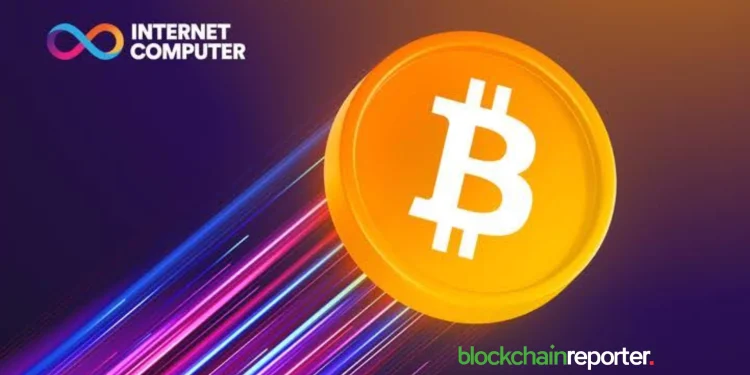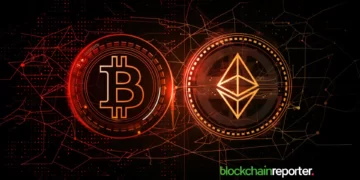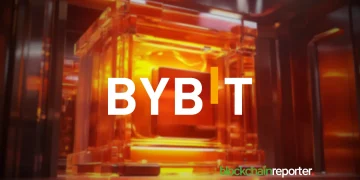The Internet Computer Protocol (ICP), a decentralized blockchain network designed to extend Web3 capabilities by overcoming the limitations of traditional blockchains and smart contracts, has successfully integrated threshold-Schnorr signatures and on-chain Bitcoin block headers. These significant updates are part of the Deuterium milestone, aimed at empowering developers to create innovative Bitcoin-native applications that were previously impossible.
Revolutionizing Bitcoin’s Role in the Decentralized Economy
Bitcoin, once primarily regarded as digital gold, is now evolving into the infrastructure that underpins a burgeoning decentralized economy. The rise of meta protocols like Runes and BRC20 tokens has dramatically increased the number of transactions on the Bitcoin network, surpassing traditional BTC transactions threefold.
To date, there are over 68 million Ordinals inscriptions, generating $459 million in fees, and more than 15 million Runes transactions, highlighting the increasing activity of developers and users in the Bitcoin ecosystem.
However, the absence of native smart contract support on the Bitcoin network has historically been a significant barrier for builders. The integration of threshold-Schnorr signatures by ICP marks a breakthrough, enabling developers to fully leverage Bitcoin’s capabilities by introducing two critical functions:
- Threshold-Schnorr Signing: ICP smart contracts can now natively sign Schnorr signatures, enabling a range of functionalities, including the etching of Runes, inscribing Ordinals in a fully decentralized manner, direct handling of BRC-20 tokens on Bitcoin Layer 1, and signing Taproot transactions.
- On-Chain Bitcoin Block Headers: Previously, ICP only supported the UTXO set of Bitcoin. The Deuterium milestone extends this support to include access to the full content of a Bitcoin block, which is becoming increasingly important as new meta protocols frequently write data to the block header.
Lomesh Dutta, VP of Growth at the DFINITY Foundation, said, “Most Bitcoin meta protocols, like Ordinals and BRC20, use Taproot transactions that rely on Schnorr signatures. With tSchnorr, ICP smart contracts can now natively sign Bitcoin transactions, enabling developers to create a wide range of use cases like etching runes, DeFi lending markets backed by Ordinals, or infrastructure such as decentralized indexers. We’re already seeing a major surge in developers adopting tSchnorr, and we believe this will significantly accelerate development in the Bitcoin ecosystem.”
Benefits for ICP Ecosystem Projects
The implementation of threshold-Schnorr signatures and on-chain Bitcoin block headers opens up numerous possibilities for projects within the ICP ecosystem. Several key players have already begun to capitalize on these advancements:
1. Omnity Network: This project will leverage threshold-Schnorr signatures to manage Bitcoin Taproot assets and connect with other blockchains like Solana and Osmosis, which use the ed25519 signature scheme. By the end of August 2024, Omnity plans to use Bitcoin Canister block header data enabled by the Deuterium milestone to verify Bitcoin blocks independently from public RPC services, ensuring complete trustlessness.
Louis Liu, founder of Omnity Network, stated, “Omnity currently employs Chain Key, ECDSA, Bitcoin integration, EVM RPC canisters, and is building a Solana spoke in anticipation of the Deuterium Milestone. We’ve created the first on-chain indexer for Bitcoin meta protocols and will use Bitcoin Canister block header data from the Deuterium Milestone to verify blocks from public RPC services, ensuring trustlessness by removing reliance on these services. We’re also undoubtedly excited to be able to support BRC20.”
2. Bioniq: With over 50,000 active users, Bioniq will use threshold-Schnorr signatures for upcoming projects that facilitate trustless cross-chain asset transfers. As the first Layer 2 solution for Bitcoin Ordinals, Bioniq enables efficient trading, minting, and showcasing of Bitcoin-based digital art and collectibles with minimal transaction fees and rapid finality.
CEO Bob Bodily praised the integration, stating, “Building Bitcoin applications on ICP has been fantastic due to the incredible Bitcoin integration protocol primitives on ICP, like the threshold ECDSA signing subnet and the Bitcoin light node running fully on chain. And now, with the upcoming Deuterium milestone, we get a threshold Schnorr signing subnet too along with block headers in the BTC light node.”
3. Helix Markets: The introduction of threshold-Schnorr signatures allows Helix users to trade ICP tokens and those from other ecosystems without the need for bridging or wrapping assets. This integration positions Helix to engage with some of the largest and fastest-growing crypto ecosystems, potentially reaching 10 million active users and accessing a $56 billion monthly trading volume on networks like Solana.
Gorazd Ocvirk, Co-founder of Helix Markets, remarked, “With the Threshold Schnorr module on the Internet Computer, we’ve finally cracked the code to seamless cross-chain interactions. Our canisters can now hold and spend Bitcoin and Solana like they’re just another asset in the digital realm. It’s like having a universal translator for blockchains, allowing us to communicate and transact with ease. And the secret key? It’s like a riddle wrapped in an enigma, keeping our digital assets safe and sound.”
A New Era for Bitcoin Developers
ICP’s latest milestone demonstrates the potential to securely tap into Bitcoin’s liquidity and user base without relying on bridging or wrapping assets. Developers interested in exploring these opportunities are encouraged to visit the DFINITY developer forum for more information and guidance.
The Internet Computer Protocol is a decentralized cloud 3.0 protocol that empowers developers to build and run services and enterprise systems directly on a public blockchain network with unprecedented scalability. Services running on ICP are tamper-proof and can natively interact with both traditional Web 2.0 services and other blockchains in a trustless manner. With its fast, low-cost, and energy-efficient infrastructure, ICP is redefining how decentralized networks operate within Web3, unlocking new possibilities for developers and businesses alike.























